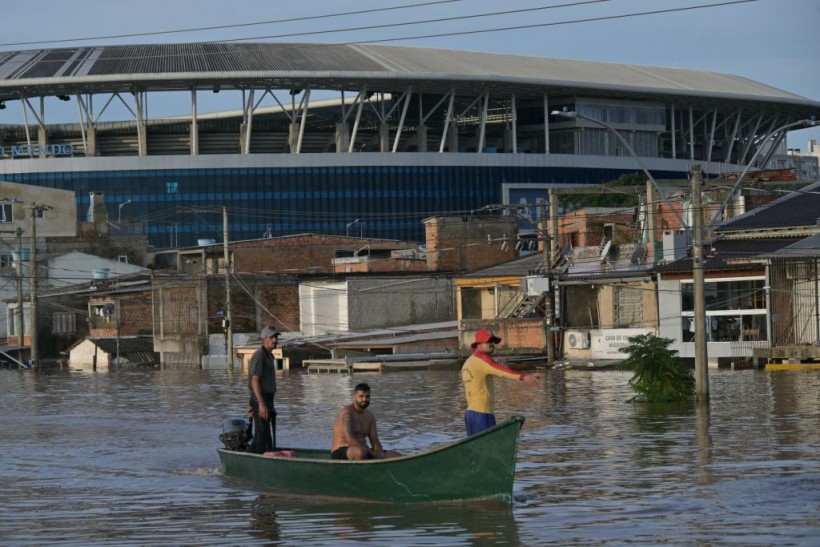Brazil Floods Death Toll Rises to 90 as Residents Struggle To Get Basic Needs

The mayor of a major city in southern Brazil issued a heartfelt plea on Tuesday urging residents to adhere to water rationing regulations.
This call to action follows a catastrophic flood that has left approximately 80% of the population without access to running water, AP News reports.
The aftermath of the flooding has been grim, with at least 90 Brazil floods death toll and over 130 individuals missing.
In the southern state of Rio Grande do Sul, rescue operations are in full swing to evacuate stranded individuals.
As the region braces for more rainfall, authorities are racing against time to reach those in need.
Porto Alegre, the capital city, finds itself virtually isolated, with key infrastructure like the airport and bus station shuttered due to rising floodwaters.
Amid the chaos, individuals like Maria Vitoria Jorge, a yoga teacher, are forced to make tough decisions.
With her apartment submerged and basic amenities inaccessible, she embarks on a journey to find temporary refuge for herself and her family.
Similarly, Adriano Hueck ventures into Brazil floods areas in a bid to salvage essential supplies, highlighting the resilience of communities in the face of adversity.
READ NEXT: Lula da Silva Calls for Emergency as Brazil Flood Deaths Reach 85, Dozens Missing
Humanitarian Crisis Unfolds
The situation on the ground paints a grim picture, with essential supplies like food and potable water running dangerously low.
Supermarkets in Porto Alegre witness long queues and depleted shelves as residents scramble to secure necessities, according to Reuters.
The scarcity extends beyond Porto Alegre, prompting neighboring states to mobilize relief efforts.
The inundation poses not only immediate threats but also long-term health risks.
Public health experts warn of potential outbreaks of diseases like dengue fever and leptospirosis as stagnant water becomes breeding grounds for pathogens.
Efforts to mitigate these risks are hindered by logistical challenges and overwhelmed healthcare systems.
Infrastructure Paralyzed
The Brazil floods wreak havoc on critical infrastructure, disrupting water and electricity services for millions.
In Porto Alegre alone, nearly half a million residents find themselves without power as utility companies prioritize safety measures in inundated areas.
Additionally, water treatment facilities face operational challenges, exacerbating the scarcity of clean water, Aljazeera noted.
The economic toll of the disaster is significant, with key facilities like the Porto Alegre airport forced to suspend operations indefinitely.
The closure of vital transportation hubs further compounds the challenges faced by residents and impedes relief efforts.
The intensity of the flooding is said to be the result of a combination of various climatic factors, according to experts including rising temperatures and humidity levels.
The impact of climate change exacerbates the vulnerability of regions like Rio Grande do Sul, increasing both the occurrence and strength of extreme weather phenomena.
As meteorological forecasts predict further rainfall, the specter of more extensive devastation looms large.
The impending cold front threatens to escalate the crisis, particularly in already beleaguered southern regions.
Despite the cessation of rainfall for the time being, the road to recovery remains fraught with challenges.
The flood-ravaged communities of southern Brazil are facing an unprecedented humanitarian crisis.
As rescue efforts continue and relief supplies are mobilized, the resilience and solidarity of both residents and responders offer a glimmer of hope amid the devastation.
READ MORE: Death Toll in Brazil Floods Hits 78
This article is owned by Latin Post.
Written by: Ross Key
WATCH: What caused the deadly Brazil floods - From Business Standard
Subscribe to Latin Post!
Sign up for our free newsletter for the Latest coverage!










